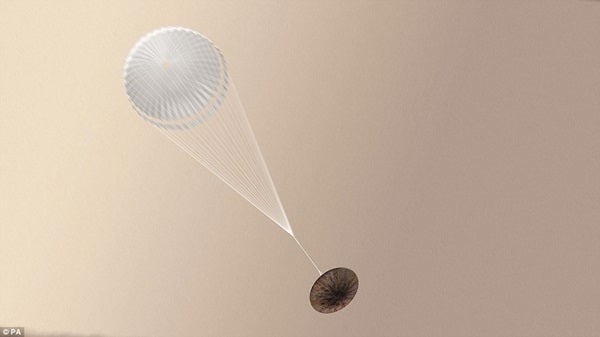Parachute design, development, and testing for planets beyond Earth is very similar to those designed for Earth. First, we pick a parachute type or shape based on the expected speed of the probe when the parachute needs to deploy, and the craft’s stability requirements. The parachute shape dictates the drag and stability of the overall system. Once we determine a shape, we use what we know about the planet’s atmospheric profile (altitude vs. air density) and standard aerodynamic equations to calculate the size the chute needs to be to achieve the desired drag profile, force, and time on chute, and get the payload safely to ground. We also have to consider parachute materials and refine the design based on the type and weight of the load and the specific environment of the planet or moon. Parallel to the parachute design, we also design and test the mortar — the device that deploys the parachute.
After the initial design is completed, we start testing, and update the design based on results. Once the flight design is completed, we manufacture multiple parachutes and mortars for both the final testing as well as the specific “flight” unit that will actually operate on Venus or Mars — or wherever our spacecraft takes it. We can’t deployment test our flight parachute system without some degradation, so we build several parachutes and mortars at the same time with the same materials. From that group, or lot as we call it, we select our test units and reserve a flight unit. We perform a final series of tests on the lot to qualify and accept the design as flight-worthy. At that point, the parachute system is ready to be packed into the spacecraft and do its job.
Mechanical engineer
Lockheed Martin










